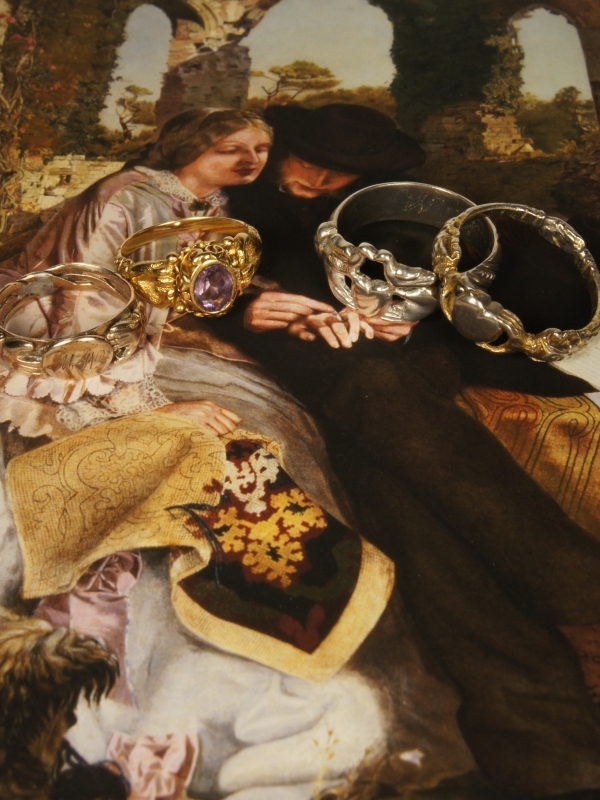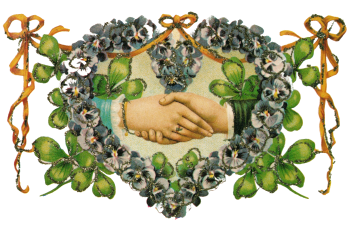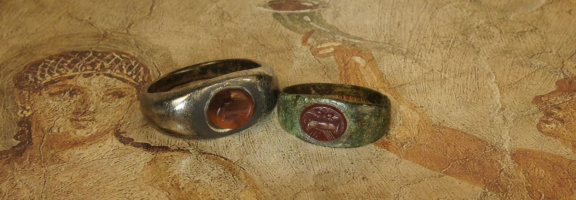After the Napoleonic Wars and the Congress of Vienna with the reorganization of the European states, people wanted rest and peace and found both in their immediate domestic environment. A phase of returning to traditional values began. With Napoleon's abolition of the guilds and the estates system, the European bourgeoisie grew stronger in the first half of the 19th century and increased the demand for art and culture. The social classes were newly formed, the rising classes increased the need for inexpensive jewellery. For the first time in the history of jewellery, so to speak, the majority of the female population was able to participate in jewellery fashion and help shape it. In order to meet the increasing demand for affordable jewellery, mechanical aids were increasingly used. This means that the goldsmith no longer usually made the entire piece of jewellery himself, but ordered so-called semi-finished products from auxiliary companies. These were decorative elements that were mechanically and serially pressed into rolled gold or silver sheet and inserted into the specially made piece by the goldsmith. In addition, since the old guild rules no longer applied, the goldsmith could hire an unlimited number of other goldsmith masters and journeymen.
The romantic world view of the early Biedermeier took pleasure in the rapturous themes of sensibility, its emotional culture, along with the cult of mourning and friendship, and the associated emblems: the mani in fede, miniature paintings, acronym rings, hair, gimmel rings, the forget-me-not flower, the dog , the lovebirds, the blazing or crowned heart, and the initials of the newlyweds remained in vogue. Only the formal language was modified: while in the late 18th century until around 1820 the classicist formal language in applied arts prevailed, i.e. a return to classical antiquity, the Biedermeier period included the stylistic features of German Gothic and early Renaissance. The return to the most diverse time epochs reached its peak in Historicism in the middle of the century, but a variety of historical ornaments can already be seen in the Biedermeier period.
Still with a strong sense of the sensuous, men and women of the Romanticism period attached great importance to love and wedding rings. Taste called for flashier, more exalted jewellery with larger bezels. The gimmel ring once again enjoyed great popularity. Regardless of the design, from now on, wedding rings have always been engraved with the date and the couple's initials. The custom prevailed that the wedding ring was worn not only by the wife but also by the husband, who also had great respect for the sentimental meaning of the love bond. In 1834 Honoré de Balzac wrote from Geneva to the Polish Countess Ewelina Hanska, his later wife, how much her friendship ring meant to him: "When I work, I wear the talisman on my finger; I put it on the index finger of my left hand, with which I hold my paper so that I am gripped by thoughts of you. I feel your presence close to me, and instead of looking for the words and ideas in the air, I just ask my lovely ring; in it I have found the whole Seraphita (Balzac's tale)." (Lettres à Madame Hanska, p. 116.)
While men in previous centuries liked to adorn themselves just as expensively and elaborately as women did, this changed with the sober men's suits at the beginning of the 19th century: at most, the wedding ring, the signet ring, a tie pin, cufflinks or a watch chain adorned the gentleman.
In many ways, Romanticism can be seen as the culmination of sentimental adornment and the soulful motifs developed in Sensibility. During the Biedermeier period, the intertwined right hands were not only exchanged as a wedding and love ring, but also increasingly given away as a pure sign of friendship among female friends. In addition, around 1840 in Austria (Vienna and Budapest) there are more and more hands that are not placed one inside the other, but instead hold a medallion, a heart or a precious stone. The Irish Claddagh ring uses the same design language and features two hands presenting a crowned heart. The heart symbolizes love, the hands friendship and trust, the crown faithfulness and loyalty (Fig. 14).

Fig. 14: TN Collection: Four wedding and love rings, 1st half of the 19th century, silver, gold-plated silver, gold, faceted amethyst. The left ring holds between the hands a plaque with the initials of the loved one "MN". The second ring holds an amethyst. The precious stone, which according to legend was worn by Saint Valentine, the patron saint of lovers, is said to symbolize deep love and fidelity, among other things. The cooing doves in the third ring stand for family happiness and home sweethearts. The ring on the right is a modification of the Irish Claddagh ring.
In the second half of the 19th century, there was a clear decline in the symbolically charged imagery in wedding rings, accelerated by the emergence of the engagement rings we know today. These were usually devoid of symbolism. The simple band of the ring was set with the most valuable gemstone or pearl that the groom could afford. With the stipulation that the mother's engagement ring was considered a family heirloom, which should be passed on to the next generation, the classic form of the solitaire ring was preferred. The name was derived from the French solitaire, individually. The solitaire ring has remained the most popular classic engagement ring with a single diamond to this day. In those days, a simple gold ring, which could be inscribed with a marriage vow or motto, and usually bore the couple's initials and the marriage date, was exchanged between the bridal couple during the wedding ceremony.
Those who found a taste for the historic symbols of love and fidelity could still purchase rings decorated with these speaking motifs. Favored by the rediscovery of history in the second half of the 19th century, the clasped hands, were not forgotten. This epoch is characterized by a rapid change in fashions and influences, by a juxtaposition of different styles, as already mentioned, by technical progress and industrial production, and finally by a return to craftsmanship.
From the 1850s and 1860s, a preference for styles from the 16th century became noticeable in Germany. The high point of this German Neo-Renaissance was in 1870/71 after the victory against France: Many Germans identified with the citizens of the 16th century, when the position of the Holy Roman Empire of the German Nation was still unchallenged and a bourgeois culture was able to develop in the German imperial cities . The German Empire, newly founded in 1871, finally demanded a "national style". Georg Horn described the lack of this "German-national" art forms as follows in the weekly magazine: "The present does not seem to be particularly suited to the creation of new art forms. Our time has a great technical trait, which does not seem to be conducive to the quiet creation of original art forms (...) With our entire artistic life in Germany, we have been subject to the slavish imitation of antiquity for too long (...) We had forgotten a time when German artists and craftsmen had assimilated and recreated the forms of antiquity in their very own way, so that the German Renaissance, although not independent of the stimuli from the Italian and French, nevertheless became an art style of its own". (Die Gartenlaube, 1878. Issue 17, p. 290.)
Supported by Georg Hirth's publication "The Renaissance Treasure of Forms - A source of instruction and inspiration for artists and tradesmen as well as for all friends of stylish beauty from the works of Dürer and Holbein", the art world found the "national style" in the two German Renaissance painters Albrecht Durer and Hans Holbein. These were considered the greatest artists of all time and their Renaissance ornamentation was carefully studied and copied. Well-known architects also designed pieces of jewellery in the style of the 16th century. For example, Gottfried Semper not only built the Federal Polytechnic in Zurich in the Neo-Renaissance style, but he also made individual designs for vases, goblets and pieces of jewellery with a Neo-Renaissance design language. Thus, the historic symbol of the mani in fede was preserved during Historicism (Fig. 15).

Fig. 15: TN Collection: Historicism, 2nd half of the 19th century, gold. Both rings show the design language of the Middle Ages and the Renaissance. The hoop of the left ring is adorned with two extremely elegant, slender Gothic hands completed with ornamented, grooved cuffs. On the right ring, the Fede motif runs around the ring band and is repeated three times. The hands also hold a heart and the cuffs are decorated with flowers, possibly forget-me-nots in a mannerist manner.
Jewellery is not essential to life, but the joy of adornment is practically part of being human. Jewellery has always been subject to fashion, contemporary tastes, one's budget and one's personal style. The joy and need to give a ring as a guarantee of unchanging friendship and love has been around since ancient times. Anyone who chooses a piece of historical jewellery carries history with them, becomes part of it and continues to write it...

×
